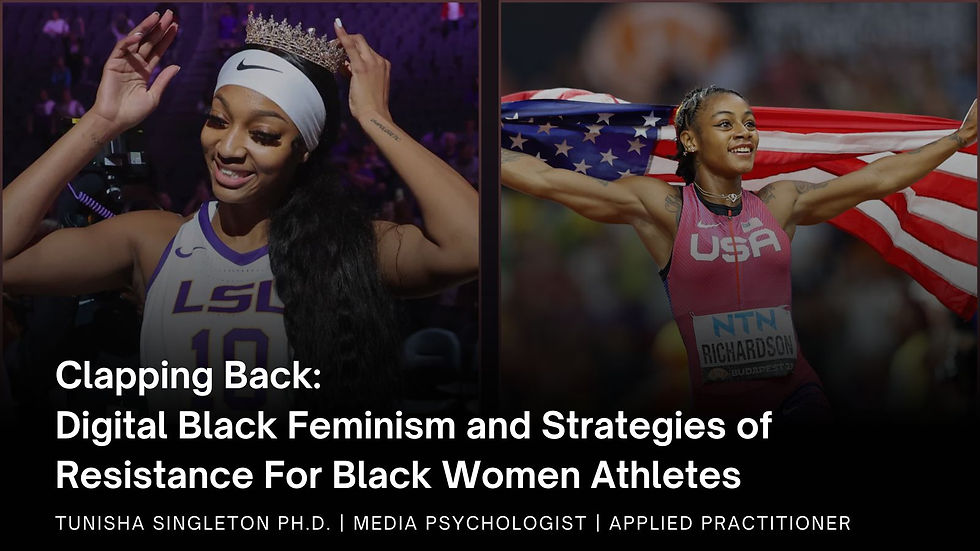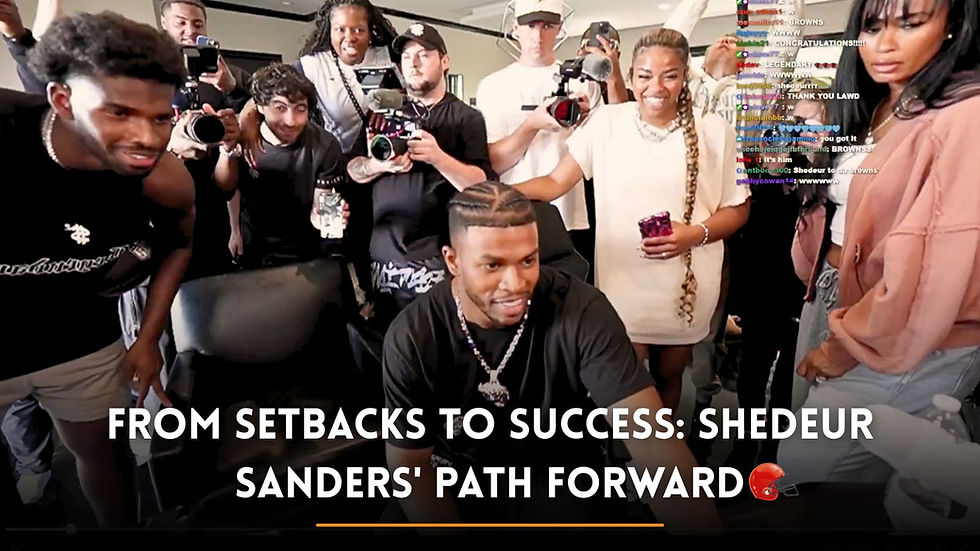What does it mean to “clapback” when you're a Black woman in sports?
- Tunisha Singleton
- Aug 16
- 2 min read
Updated: Aug 17

At the International Association for Communication and Sport Summit, I had the honor of presenting my latest research project: ”Clapping Back: Digital Black Feminism and Everyday Resistance from Black Female Athletes.”
But before I even got to the podium, the irony hit hard. You know how conference programming is typically organized by theme or similar subject matter? Well, my session, centered entirely on analyzing the lived experiences and online resistance shown by Black women athletes, was grouped under… wait for it…“Caitlin Clark (Part 1) and Race” 😳
Not “mediating visibility.”
Not “issues in sports.”
Just a broad, misaligned category that, yet again, placed Black women in the shadow of white narratives.
And honestly? That moment said everything my research aimed to prove. So in the end, the irony was too perfect for me not to open my presentation by pointing out a paper, LITERALLY TITLED DIGITAL BLACK FEMINISM, was programmed under Caitlin Clark.
See? The erasure of Black female visibility is so prevalent, even academic summits are subconsciously guilty of perpetuating dominant ideologies.
Too often, Black female athletes show up, speak out, and perform at elite levels, and still find themselves erased, minimized, or miscategorized. This paper highlights how clapbacks - sharp, strategic responses - aren’t just reactions. They’re resistive. They’re a means of survival. They’re communication strategies are deeply rooted in Black rhetorical traditions that challenge misrepresentation and reshape what visibility looks like.
Through my cultural case studies of Angel Reese and Sha’Carri Richardson, I broke down how their digital presence actively resists media narratives, asserts unapologetic identity, and redefines what it means to be heard.
My three biggest takeaways:
Black women athletes are communicative agents of change.
Every day, resistance strengthens the collective cultural identity.
There is joy in resistance—turning struggle into power, and oppression into creative growth.
View my full presentation deck by clicking below
If you’ve ever wondered what resistance looks like in real-time, online, and in front of millions, watch, learn, and listen to Black women.
What role should cultural competency play in how conferences, media, and sport institutions frame conversations about race and gender?




Comments